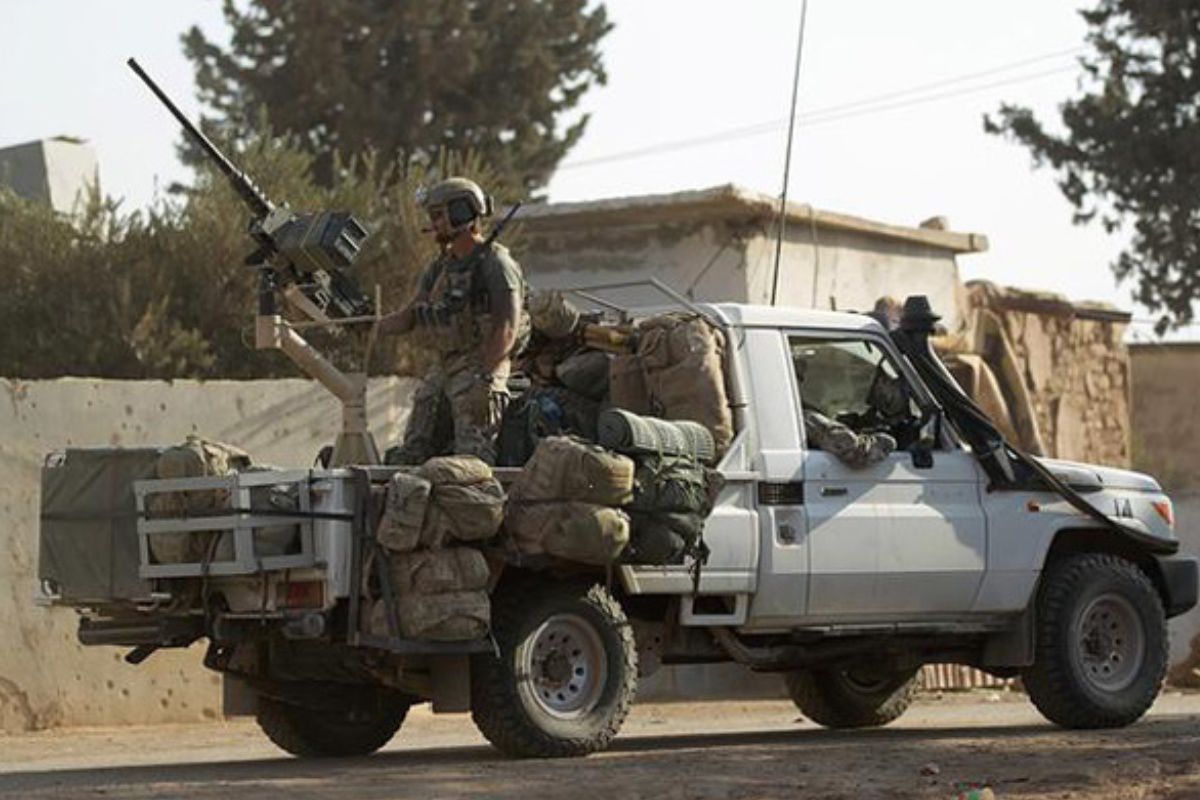Paris 2024: Five Aussie women’s water polo players test Covid-19 positive
Meares said the Covid cases have been confined to the water polo team. She said the affected players are clear to practice when they feel well enough to train.
In a rapidly evolving geopolitical landscape, the United States finds itself recalibrating its military readiness, particularly in the Pacific, as concerns intensify over a potential conflict involving Taiwan.

Representative Photo (ANI)
In a rapidly evolving geopolitical landscape, the United States finds itself recalibrating its military readiness, particularly in the Pacific, as concerns intensify over a potential conflict involving Taiwan. Recent joint exercises with Australia, notably the Talisman Sabre drills, not only showcased the deepening defence cooperation between the two nations but also revealed a discreet yet critical aspect ~ the creation of new stockpiles of military equipment left behind in Australia. The significance of this move lies in the US military’s recognition of the vulnerabilities within its logistics network, a pivotal factor often overshadowed by discussions of firepower and technological prowess.
The aftermath of Talisman Sabre saw approximately 330 vehicles, 130 containers, and assorted equipment strategically positioned in southeastern Australia. This cache, previously undisclosed, can sustain up to three logistics companies comprising 500 or more soldiers ~ an essential resource for ensuring timely and efficient supply lines to fighters in potential conflicts. The looming spectre of a Chinese invasion of Taiwan has prompted a re-evaluation of the US military’s logistical capabilities. Interviews with current and former officials underscore a consensus that American military logistics in the Pacific represent a vulnerable point, one that adversaries might exploit to cripple US air and sea power.
The fear is that China, in a hypothetical conflict, could target jet fuel supplies or refuelling ships, thus circumventing direct engagements with heavily armed fighter jets or the sinking of the US fleet. In response, the US military is strategically spreading its logistical hubs across the Pacific region, including establishing warehouses in Australia. This move is not merely about addressing immediate concerns but is part of a broader strategy aimed at enhancing the mobility and distribution of US forces in the region. The US Department of Defense emphasises collaboration with allies to achieve this goal, reflecting a commitment to shared security interests. However, critics argue that the current pace and allocation of resources are insufficient to address the urgency of the situation.
Advertisement
While the US military acknowledges the need for a more dispersed and agile logistics network, some voices, such as Congressman Mike Waltz, caution against extended timelines. In the face of intelligence warnings blinking red for the next five years, Mr Waltz points to the disparity in timelines to address these risks, with some projections stretching to 10, 15, or even 20 years. The crux of the matter lies in finding a delicate balance between strategic foresight and immediate action. The Talisman Sabre exercises and the subsequent stockpiling of military equipment in Australia demonstrate a proactive approach to mitigating logistical vulnerabilities.
Yet, the critique underscores the broader challenge the US faces: how to reconcile the pressing need for security measures with the bureaucratic timelines inherent in large-scale military planning and implementation. The road ahead demands not just strategic foresight but an unwavering commitment to timely action to safeguard regional stability and security
Advertisement